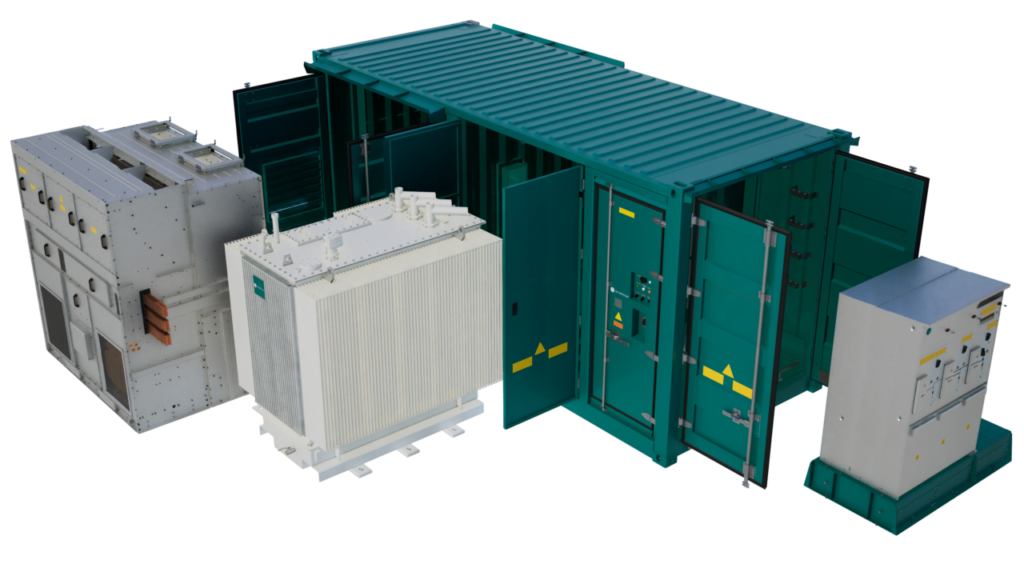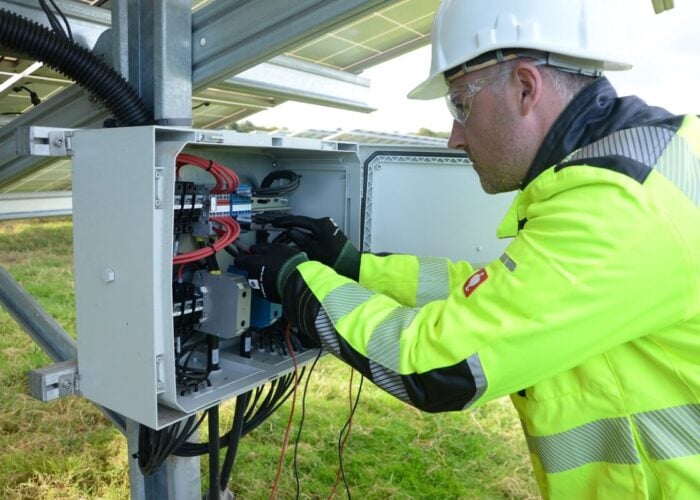
PV Tech has covered the prospects of silicon carbide (SiC) in solar power conversion for some time due, in part, to the efficiency advantages of the material, but largelyonf the back of announcements from companies claiming to be developing advanced SiC solutions.
One of those firms was GE Vernova. As far back as 2016, the company hailed the arrival of the first multi-MW, utility-scale central inverter based completely on SiC technology. The 1,500V technology was said to boast an efficiency rating of 99% weighted EU (European Union) level, helping customers save up to 3% in capex and up to 15% in opex. But by 2018, the market was still waiting.
Try Premium for just $1
- Full premium access for the first month at only $1
- Converts to an annual rate after 30 days unless cancelled
- Cancel anytime during the trial period
Premium Benefits
- Expert industry analysis and interviews
- Digital access to PV Tech Power journal
- Exclusive event discounts
Or get the full Premium subscription right away
Or continue reading this article for free
Owen Schelenz, power electronics product leader, power conversion & storage at GE Vernova, first got involved in the development of SiC solar technology at what was then called GE Power Conversion back in 2015/16. As he explains to PV Tech, the race was on across the GE group to develop applications for SiC, with power electronics even progressing to the point of field tests.
“Multiple business units were asked to consider it, and one of the ideas was to roll it out in solar for improved efficiency,” he says. “At the time, we were asked to develop a unit using the silicon carbide device, and we actually fielded a couple of 1MW units to sites in the United States.”
GE Vernova’s FlexInverter range was first slated to be based on SiC in 2017, but, according to Schelenz, the company pivoted to a silicon-based solution due to cost-related issues.
“We tested for a while, but further industrialisation and commercialisation of that SiC device within our company didn’t take place. It’s a very capital-intensive process to have foundries that make silicon carbide or to make semiconductors in general, and so that didn’t quite work out. Our silicon carbide team still exists but they’re primarily working with aviation,” he explains.
Tougher payback prospects
GE Vernova’s attention on SiC technology has since moved to energy storage applications. The company unveiled the 1.5kV FlexInverter for utility-scale energy storage featuring SiC technology in May 2025, six months after a 2kVdc utility-scale solar inverter was launched in North America without the same technological step forward.
This is despite the considerable advantages offered by SiC to solar power conversion. Such devices can operate at higher temperatures than silicon alternatives and endure higher voltages, taking on more current and moving more heat away from the energy system. A SiC power electronics device can also switch much faster between low and high voltages, limiting energy losses and improving overall efficiency.
While this difference can seem small, from the 98% efficiency of high-quality silicon inverters to the 99% touted by GE Vernova nearly ten years ago, this incremental improvement represents a 50% reduction in energy loss. Spread over a year, the additional output of a solar farm using SiC inverters could be significant.
With these advantages in mind, GE Vernova’s hesitance to pursue the technology for utility-scale solar while driving forward SiC applications in energy storage has left some industry members scratching their heads, as Schelenz explains.
“I presented at a conference on medium voltage in Germany because of the 2kV unit, and I said that silicon carbide is probably not ready yet for PV. I got a lot of people in the audience saying, ‘What are you talking about?’ But it makes sense because you only go through the inverter once with PV, unlike storage where you go through it twice,” he says.
“The other issue with PV is that using SiC to improve efficiency only matters when you are at partial power. PV plants are overbuilt typically and when the DC AC ratio hits and you have to spill power, nobody cares about the inverter efficiency because you’re making nameplate nonetheless.
“The efficiency benefit matters for every kWh in and out for a battery, but it only matters to those kWh out when the [PV] inverter is not spilling power at overcapacity. Given the higher cost of silicon carbide, the payback is a lot more difficult in PV.”
A new opportunity

These economic factors may, however, have changed within just a few months. Schelenz told PV Tech that GE Vernova is now working with OEMs such as Toshiba and Mitsubishi to look again at SiC applications for utility-scale solar customers. This renewed interest is a reflection of the increased availability of SiC on the global supply chain as a result of the boom-and-bust cycle of electric vehicles, which use SiC for many of the advantages available to solar.
Schelenz says: “There was the EV craze and then all of a sudden that kind of popped. Now you have all this stranded silicon carbide capacity trying to find new ways to go to market. It’s a similar story as with batteries where there’s an oversupply in the market.
“For a long time we were worried about competition in the supply chain from EVs, even today perhaps there’s this nagging concern in some of our supply chain. But if you draw analogies to the BESS industry, I think around 80-95% of batteries go into EVs. What goes into energy storage and utility-scale is the leftover crumbs and so I think something similar will happen for silicon carbide.
“If there’s money to be made somebody’s going to find a way to take a piece of it.”
Reacting to a growing problem
This opportunity for profit has come as a result of not just lower technology costs but an emerging challenge for operators.
Schelenz explains: “A lot of the industry is waking up to issues with P-Q [active-reactive power] capability on their sites. They are realising that they maybe didn’t model the reactive power capabilities of the site correctly…they didn’t understand that voltage moves up and down and as voltage moves down, depending on how your inverters are sized and what happens on your AC side, you may hit a wall in terms of being able to provide or absorb reactive power.
“The unit is effectively getting smaller on a MW basis because more of it has to be allocated to reactive power. Where the efficiency of silicon carbide may not be as interesting, the power density we are able to get to with SiC is perhaps the more interesting piece for PV.”
SiC devices can improve an inverter’s P-Q capability by enabling higher switching frequency, lower losses and higher thermal limits, which together mean the inverter can deliver improved reactive power control while maintaining high efficiency for active power delivery.
This additional P-Q power density means that SiC is now, according to Schelenz, “getting to a price point where we feel like we can make sense of it for PV”.
For this reason, GE-Vernova is working on SiC-based products aimed at fulfilling the evolving needs of PV system architectures, including potential for crossover with the company’s evolving work on 2kV projects.
While GE Vernova and rival SMA have dipped their toes into the world of utility-scale SiC power electronics through energy storage, others, such as Imeon and Fraunhofer ISE, are working hard to prove the technology is ready for solar PV. While these efforts are limited in number, Schelenz believes more will join.
“I think we will see the switch. Silicon had a huge run of many years of development, fine tuning [and] manufacturing, but silicon carbide is coming fast. It’s already made a huge splash in EVs and, given the benefits of what it can do for central inverters, I think the time is coming for it,” he says
“If we have another chat in six months or maybe even three months, we may have gotten to the point where we have found that this pencils out with our solar customers and we’re no longer wringing our hands about the cost of silicon carbide because we found something that works right for both of us.”






